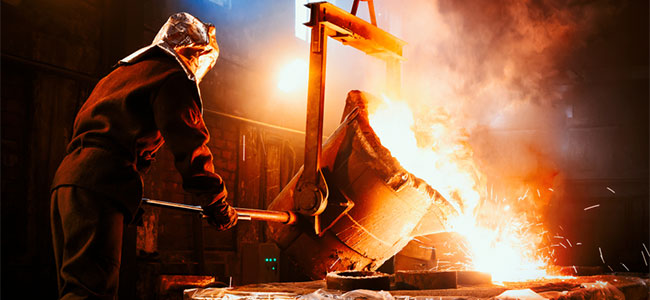
Page 2 of 4
Protective Apparel at the Tip of the Pyramid
Layering also stems from a paradigm shift in recognizing that extreme work environments are multi-exposure environments and need solutions that are designed with that in mind. For instance, in a steel mill, there aren’t just hazards stemming from extremely hot metal; there is also a lot of electricity in play that carries its own risks.
So, an employee might face a slew of hazards: arc flashes, electrical threats, steam exposure, and metal splashes. Previously, safety measures approached these hazards individually when it came to the protective apparel and gear being used.
“Now [those industries] realize those hazards are all in the same environment and that you need to have something that can withstand all of that,” Hirschi says. “So just qualifying different products for multi-use environments has changed the way a lot of these safety directors make their decisions on what to wear in their specific location.”
In essence, the top of the hazard pyramid requires not only higher protection levels but also a holistic approach, understanding the complex, multifaceted risks workers face and designing apparel to address them all.
Emphasizing Comfort
But it’s important to think about how that layering plays out in the real-world setting presented by these extreme environments. Using the example of safety protocols for workers in steel mills, a three-layer system is employed that involves a base layer, followed by a coverall, and finally, an aluminized outer layer. That’s a lot of coverage for a worker in a still mill, Hirschi notes.
“No one wants to be wearing three layers when you’re standing in front of a 3,000-degree furnace,” he says. Yet, the efficacy of these layers is undeniable. Those three layers will protect against an incident such as a molten metal splash. “There haven’t been any injuries reported when they’re compliant.”
The key phrase in that sentence is “when they’re compliant,” Hirschi underscores.
“Say you work in the south at a pulp paper mill,” he continues explaining, using another example where the layers might even be fewer. “It’s 100 percent humidity, 90 degrees outside, and you’re supposed to throw on multiple layers in front of a 2,000-degree furnace. It’s simply not feasible for someone to work long hours in that environment.”
This article originally appeared in the October 2023 issue of Occupational Health & Safety.